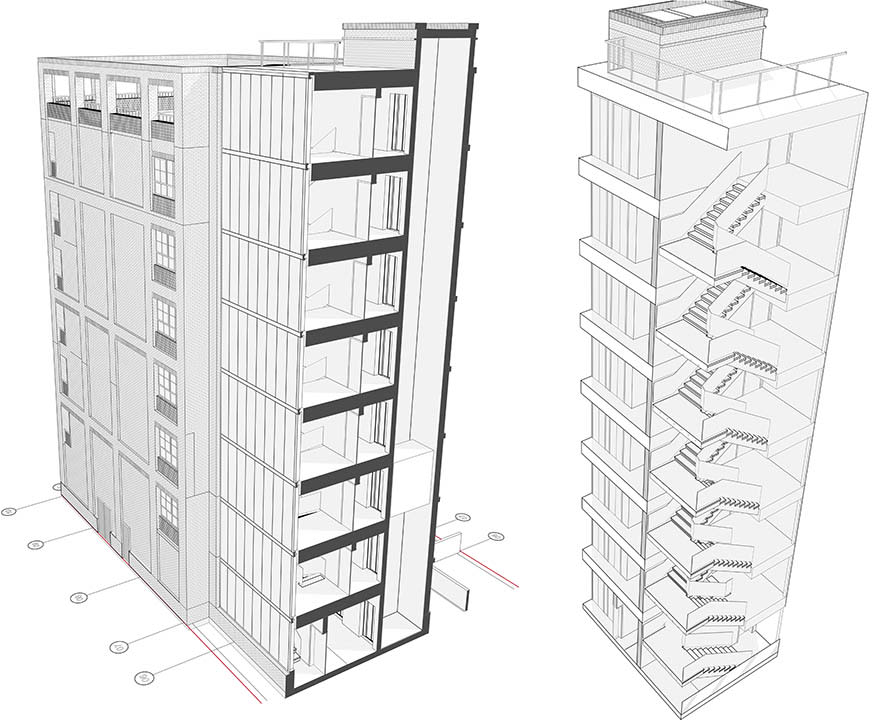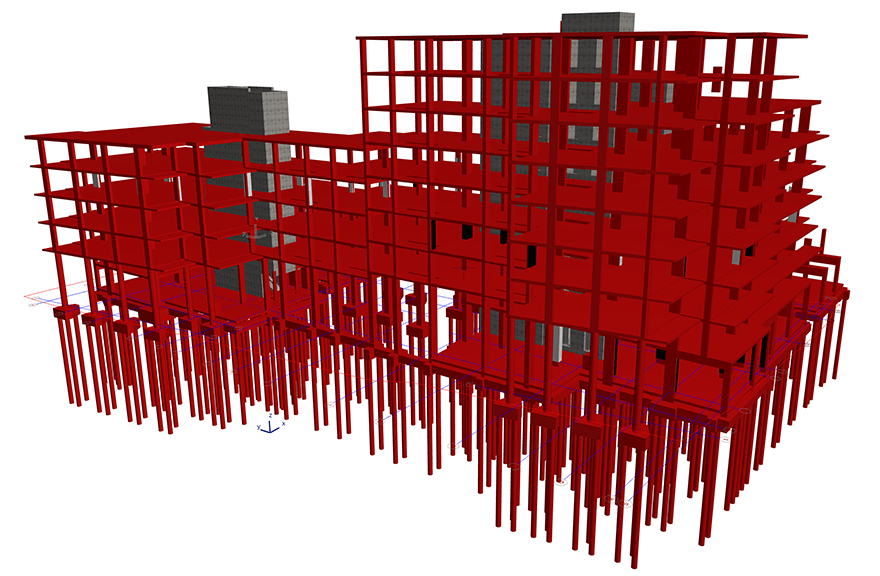- Client: Private residential client
- Lead Contractor: Create Design (lead designer)
- BIM Tools: Graphisoft ArchiCAD, BIMx
Located in the London Borough of Tower Hamlets, close to the River Thames, 33 Caroline Street started out as a new build block of 33 private, affordable and accessible apartments.
The client, a medium-sized private developer, subsequently added the requirement for a second building, with a retained Grade II-listed facade, and then a third building, that together would add 60 units, including studios, and one, two and three-bed apartments.
Typical of many firms of a similar size and background, the client had not heard of BIM and was not aware of the benefits of BIM standards or protocols. However, Create Design was keen to carry out its first fully fledged BIM project and assumed the ad hoc role of BIM coordinator.
The initial ambition was to deliver the project in line with Level 2, but the goalposts shifted when it became clear the client was not prepared to pay for BIM-related services or to incorporate BIM requirements into consultant appointments.

ArchiCAD was chosen by the architect because it was considered cheaper and more user friendly in terms of IFC data exchange
Paul Bedson, BIM manager at Create Design, told BIM+: “Many of the BIM-enabling clauses we try to write into our appointments end up either being scratched out or glossed over because of the perceived up-front cost associated with BIM.
“On Caroline Street, the client was only interested in features that could support its number crunching, such as the ability to run early stage quantity take-offs and feasibility studies for tenure and mapping. BIM helped form the business model for the project.”
The architect developed a process to prepare and coordinate 3D models among the consultants, but the lack a formal BIM Execution Plan or agreement on design responsibilities and coordination deadlines led to some issues, such as model information not arriving at the correct time, or in the correct format.
David Brook, senior architect at Create Design, told BIM+: “In future it is imperative that, even if the client is not paying for a BIM Execution Plan, we get something on the table to share between consultants, which would really help streamline the process.”
The BIM authoring software ArchiCAD was chosen by the architect, over more widely used Revit software, because it was considered cheaper and more user friendly in terms of IFC data exchange, with less upfront work required to translate models received from other consultants into the software.

Graphisoft’s browser-based model viewer BIMx made it simple to explain design decisions to the client and other stakeholders
The ability to schedule quantities in ArchiCAD, and have pricing information to hand early on, meant the architect was absorbing some of the responsibilities of the quantity surveyor. “It helped us identify where to better focus the money on the project and pick our battles at an earlier stage, rather than have to wait for a cost report from the QS when it was too late to challenge it,” says Brook.
As the project progressed, a large number of design variations were required and ArchiCAD made it possible to fully coordinate the changes with the rest of the program. Built-in renovation filters were used on the second phase, which included the Grade II-listed facade, using simple colour coding to clearly show areas due to be demolished or retained.
The browser-based model viewer BIMx, from Graphisoft, made it simple to explain design decisions to the client and other stakeholders without the need for dedicated software running on a powerful computer.
A key lesson learnt was the inadequacy of certain BIM Level 2 standards and processes for this type of project. “Milestones such as Uniclass and COBie data have very little value for many clients at this end of the market doing small scale or one-off developments,” says Brook.
The detailed clash detection process also “clouded the water” by picking up numerous hard body clashes between the structures and architecture, but failing to identify important soft body clashes, such as between fixed furniture and walls. As a result, consultants had to carry out a lot of clash detection by eye.
“The clash process does not always give the information you want to control at the right time in the design,” says Brook.
“In future, we plan to take a step back and use more manual capture and logging to flag items up and coordinate them over the phone or doing a screen share, rather than have to generate a long schedule of clashes that are often irrelevant and don’t get resolved until a design review meeting.”
With planning permission in place, the project is currently on hold, pending confirmation of funding.











